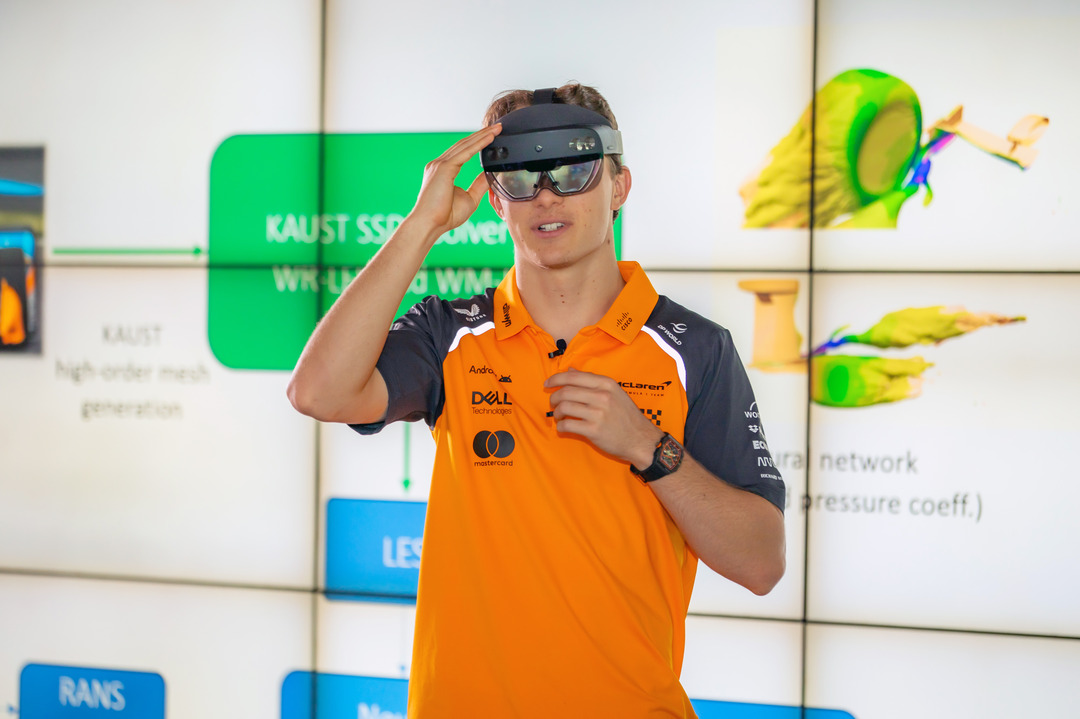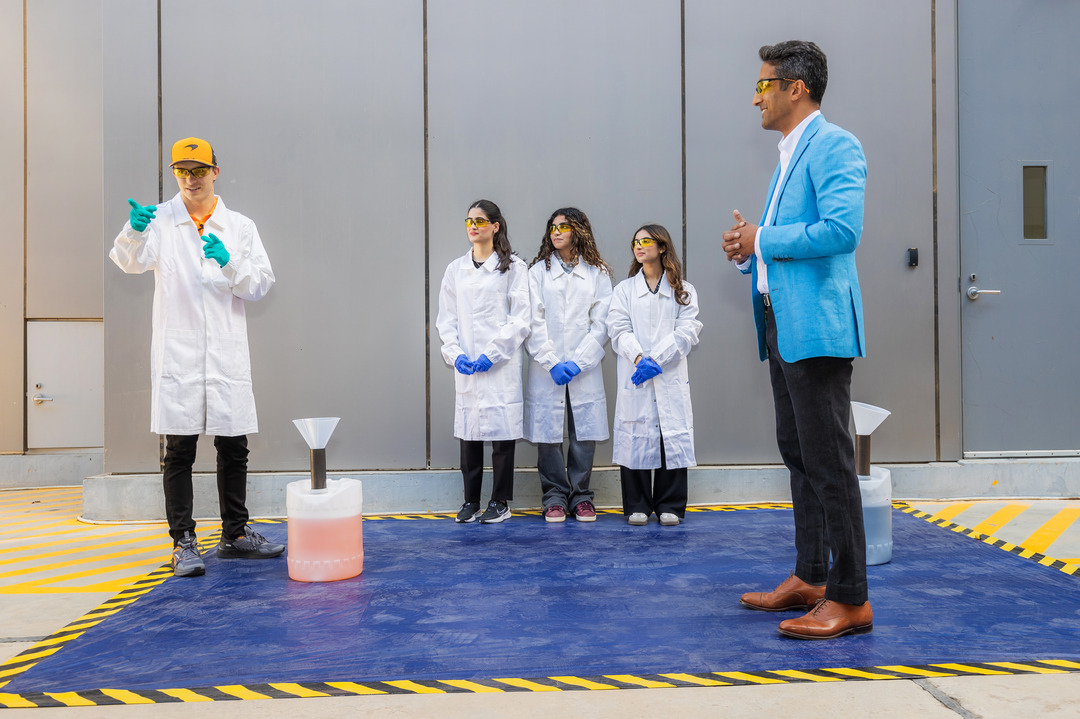KAUST and McLaren Racing: A winning formula for innovation and impact

McLaren driver Oscar Piastri tries out some KAUST equipment during his recent research tour of the University ahead of the Saudi Arabian Grand Prix.
Fresh off a victory at the 2025 Saudi Arabian Grand Prix, McLaren Racing and KAUST are turbocharging research, innovation and education through a dynamic collaboration between a university and a Formula 1 team that advances high-performance motorsport while delivering real-world solutions for industry and society. The high-speed effort supports the Kingdom’s pursuit of global excellence in sport, science and technology, aligned with Saudi Vision 2030.
Ahead of his monumental win at the Jeddah race, held April 18-20, McLaren Racing driver Oscar Piastri visited KAUST for a research tour showcasing the partnership’s collaborative projects in aerodynamics, advanced lubricants and biosensors.
“It’s a very cool collaboration to have, it’s great to have such great involvement in motor sport, and I’m looking forward to the future,” Piastri said, adding that the McLaren Racing-KAUST partnership is unique and mutually beneficial. “As a team, we have a lot of resources in a very specific field. Obviously, from the University’s side, it’s great to be able to use those resources beyond F1 as well. It’s a great partnership that brings a lot to both sides.”
For example, Professor Matteo Parsani, Applied Mathematics and Computational Science, highlighted how his research team’s aerodynamics work with the Arrow McLaren IndyCar Team — squeezing out more efficient algorithms from complex race car geometries — ultimately supports Saudi industry. “These tools are now being used for another big project we have with Ceer Motors, which aims to produce electric vehicles in the Kingdom.”
The partnership drives home KAUST’s role as a global leader in high-impact science and technology and reaffirms its position as a hub for cross-sector collaboration with world-leading innovators such as McLaren Racing.
Impactful research
Leading this research collaboration from KAUST is Parsani, joined by Professor Khaled Salama, Electrical and Computer Engineering, and Professors Mani Sarathy and Sanjay Rastogi, Chemical Engineering. According to Sarathy, his team is designing improved lubricant formulations to reduce friction, making vehicles faster and more efficient — a solution in race car driving and more practical applications.
“We improve the economy of Saudi Arabia toward Vision 2030 by developing crude oil into more high value-added products such as additives and finished lubricants for automobile applications,” he said. “By developing these new products, we’re also creating new industries and opportunities for employment, technology development and export from the Kingdom of Saudi Arabia.”
Youssef Al Ashkar, a Ph.D. student in chemical engineering, said KAUST’s work with McLaren Racing focuses on improving the tribological performance of the team’s race cars. “However, the material we develop is promising for the use in commercial vehicles.”
Salama’s team is developing technology to track and better understand drivers’ sleep patterns, jet lag and eating habits, among other factors, to enhance performance. His team is confident KAUST can reduce the size and power consumption of its monitoring devices while improving analytical and personalization tools to better identify key performance patterns.

McLaren driver Oscar Piastri (left) engages in some scientific experimentation under the supervision of KAUST Professor Mani Sarathy during a recent research tour of the University.
“The tools developed in both hardware and software will allow us to build systems that could be translated into other applications in the Kingdom,” he said. For example, these devices could be used in healthcare and wellness to monitor patients during their daily routines.
For McLaren Racing, noted Neil Joshua Limbaga, a KAUST M.S./Ph.D. in Electrical and Computer Engineering, a full-stack human performance system can utilize optical-based sensors, providing insights on an athlete’s overall health and recovery before, during, and after the competition. Limbaga, who spent six months with McLaren Racing, said this project has been very valuable for him academically.
“This partnership with McLaren Racing opens our perspectives to the different industrial challenges and problems. As a student, I was able to understand the day-to-day systems and complexities of a Formula 1 racing team. This, in turn, shaped the research that we’re working on.”
Education matters
In addition to advancing joint technology projects, the partnership includes a human capacity-building component, underscoring KAUST’s and McLaren Racing’s commitment to fueling future talent in science and engineering. To that end, Ph.D. candidate Luca Galimberti, a student of Parsani, is among the KAUST scholars visiting the McLaren Technology Centre in the U.K. to carry out a student project.

McLaren driver Oscar Piastri (left) meets with Professor Matteo Parsani during his recent research tour of KAUST.
“Overall, this experience will significantly shape my future career in computational sciences. I am grateful that KAUST and McLaren have partnered to provide this valuable opportunity to many students, including myself,” he said, adding that joining McLaren Racing fulfills a lifelong dream and, as a Ph.D. student specializing in computational fluid dynamics, he views it as a valuable chance to gain insight into how a leading company in the field operates.
“The technology and expertise of McLaren’s engineering — particularly in areas such as wind tunnels, real-world data analysis and simulation — will greatly enhance my understanding of aerodynamics.”

